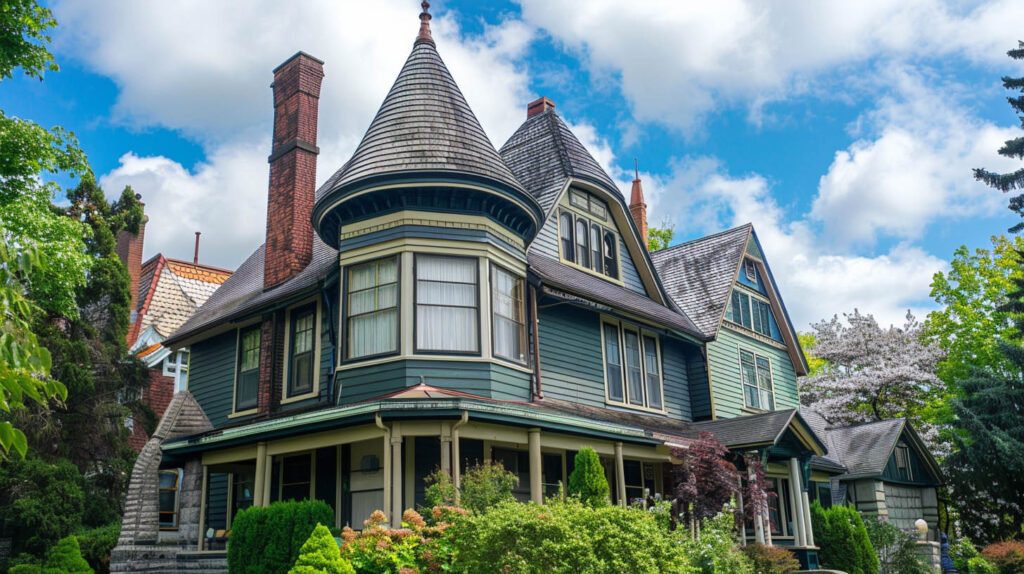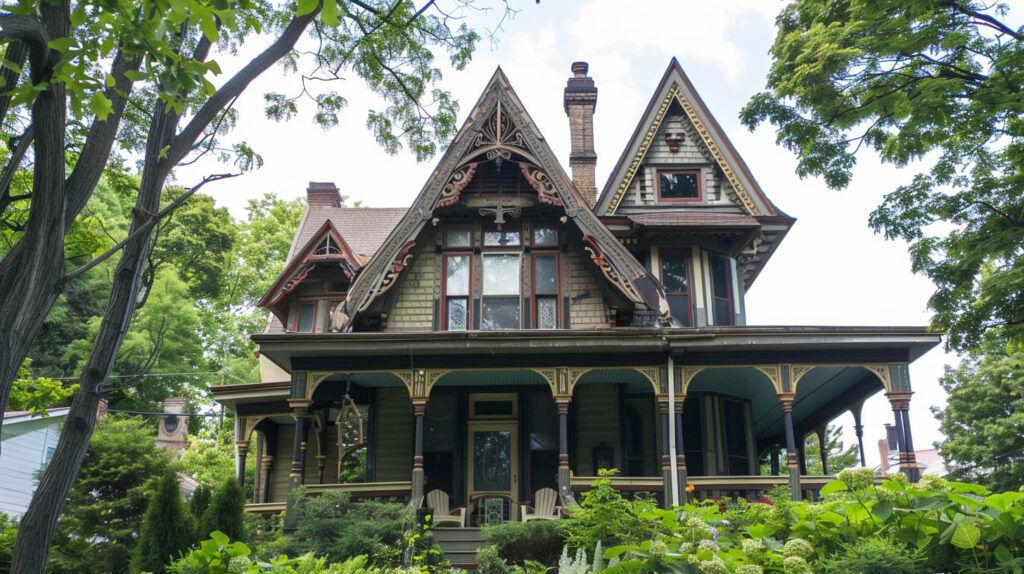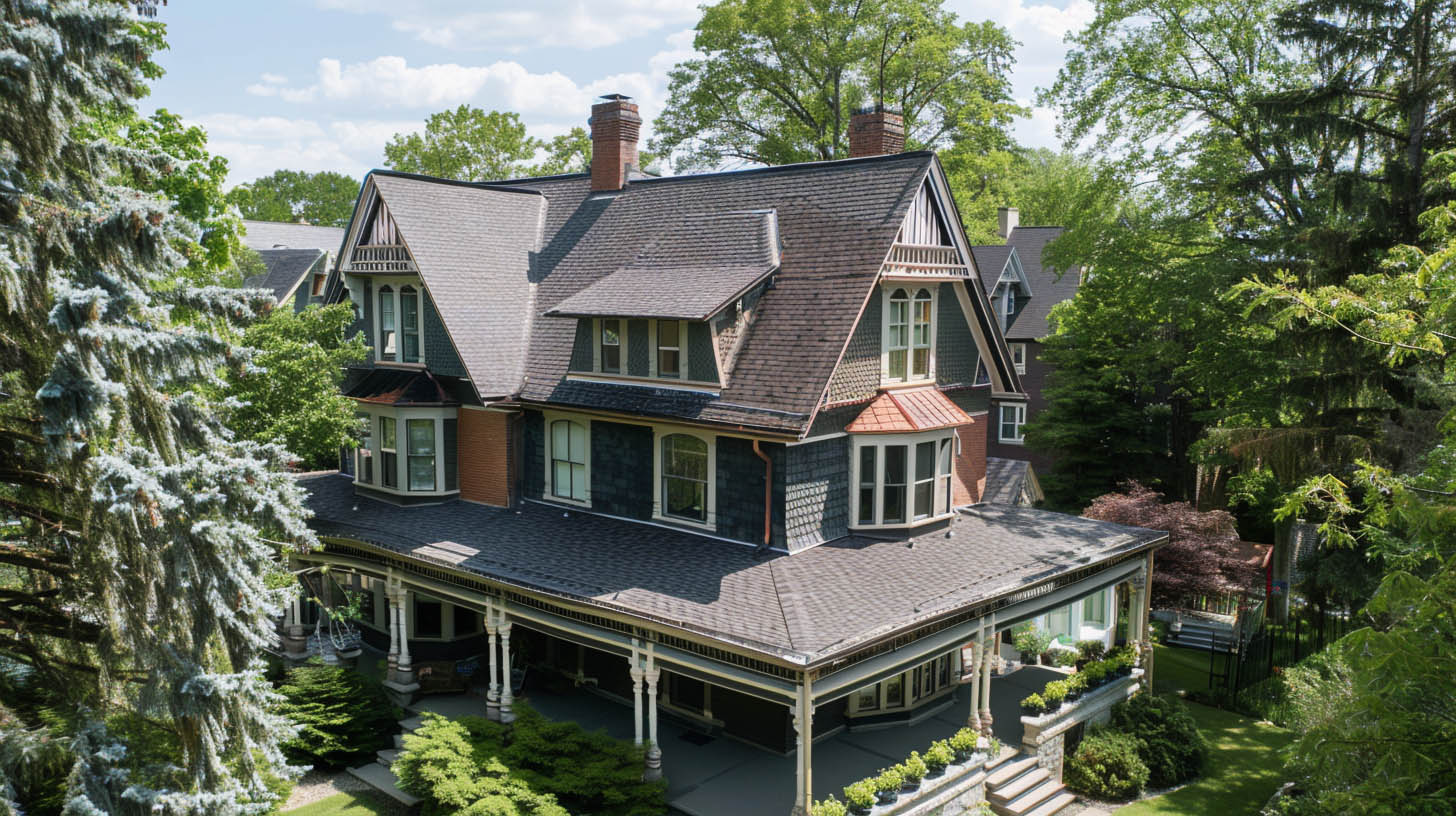Best Practices for Roof Replacement on Historic Homes
Renovating the roof of a historic home isn’t just about aesthetics—it’s about preserving architectural integrity while ensuring the protection and longevity of the structure. Every decision, from selecting materials to working with experienced professionals, impacts the overall character of the home and its heritage. At Specialist Roofing & Repair, we understand the unique significance of these projects. Our award-winning team offers reliable solutions rooted in skilled craftsmanship and historic preservation principles, ensuring your home retains its charm while upgraded for modern resilience in Long Beach, CA.
Understanding the Unique Challenges of Historic Roof Replacement
Replacing a roof on a historic home comes with distinct challenges due to the intricacy of these properties. Unlike modern homes, historic roofs often feature unique designs, fragile materials, and age-related structural concerns that require specialized expertise to address properly.
Additionally, balancing preservation guidelines, maintaining the original architectural style, and complying with building codes amplify the complexity of such endeavors. Overcoming these challenges demands a careful approach that respects both the home’s rich history and the homeowner’s needs for safety, comfort, and durability.
Preserving Architectural Integrity During Roofing Projects
Attention to detail is paramount when embarking on a historic roof restoration project. Selecting roofing materials that align with the architectural style of the building not only maintains its original character but also adheres to preservation guidelines. Skilled craftsmanship plays a vital role in ensuring that the integrity of the building remains intact. Utilizing traditional roofing materials while considering modern technology can enhance both the aesthetics and longevity of the structure. Following these practices safeguards the unique historical significance of your home.

Navigating Age-Related Structural Concerns
Addressing age-related structural concerns is essential in preserving the integrity of historic homes. Regular inspections can uncover hidden issues, such as compromised rafters or deteriorated sheathing, which may threaten the longevity of the structure. Working closely with a local historic preservation commission ensures adherence to preservation standards while utilizing skilled craftsmanship. Maintaining historical accuracy in renovations, especially regarding ventilation systems and load-bearing capacities, safeguards not only the original character of the building but also its architectural heritage for future generations.
Evaluating the Existing Roof Condition
Assessing the condition of a historic roof starts with detailed inspections to uncover weaknesses, damage, or age-related issues. Look for sagging areas, missing shingles, or leaks that might indicate underlying structural problems. Routine evaluations help stave off escalating repair costs and preserve the roof’s reliability longer.
Pairing these inspections with regular maintenance safeguards the integrity of the building while respecting its heritage. A proactive approach ensures timely intervention, allowing historical homes to retain their charm and structural soundness despite the challenges of ageing.
Identifying Historic Roofing Materials and Construction Methods
Analyzing a historic home’s roof begins with recognizing the original materials used, which could range from wood shingles and clay tiles to intricately crafted slate roofs. Understanding the construction methods, such as hand-nailed techniques typical of the era, is equally crucial for historical accuracy. Collaboration with the local historic preservation commission is vital for adhering to preservation guidelines and ensuring the use of authentic roofing materials. This attention to detail not only maintains architectural integrity but enriches the life of your roof and honors the building’s rich history.

Recognizing Signs It’s Time for Roof Replacement
Signs indicating the need for roof replacement often include visible wear and tear, such as curling shingles, cracked tiles, or significant discoloration. An inspection may reveal leaks compromising the structural integrity of the building. Moreover, if frequent repairs fail to extend the life of the roof, a more comprehensive solution becomes necessary. Regular maintenance and inspections can illuminate underlying issues that jeopardize the historic character of your home, ensuring that preservation standards are upheld while maintaining historical accuracy.
Compliance with Local Regulations and Preservation Guidelines
Adhering to preservation guidelines and local building regulations is essential during historic roof replacement. The local historic preservation commission often dictates rules regarding materials, techniques, and aesthetics to maintain authenticity. These standards ensure the home’s historical integrity isn’t compromised.
Securing necessary permits may also involve collaboration with preservation societies to align restoration efforts with community expectations. Compliance guarantees the project meets both legal requirements and preservation principles, supporting the longevity and heritage of the home.
Researching Long Beach and California Historic Home Requirements
Understanding the specific requirements of historic homes in Long Beach and California is essential for compliance with local preservation guidelines. Engaging with the local historic preservation commission ensures adherence to regulations that protect architectural heritage. Researching applicable building codes and restoration standards will help maintain the historical significance of landmarks. Identifying the necessary permits and documentation required for roof replacement projects can facilitate a smoother process while preserving the original character of these unique properties. Regular inspections and adherence to preservation standards are crucial.

Securing Permits and Approvals for Roof Replacement
Getting permits and approvals for historic roof replacement is a necessary step in ensuring compliance and smooth restoration. Engage with preservation authorities early to clarify local regulations and negotiate permits validating your choices.
Document your plans comprehensively, including the roofing materials and techniques to be employed. This transparency helps navigate approval processes without delays, while demonstrating respect for preservation guidelines.
Work with contractors familiar with California’s requirements, ensuring they meet the standards set by preservation commissions for seamless execution of restoration projects.
Selecting Appropriate Materials for Historic Homes
Choosing suitable roofing materials is vital to upholding the historical character of a home while enhancing its durability. Authentic options like slate or clay tiles preserve the original design, but modern alternatives such as synthetic slate offer comparable aesthetics with added fire resistance and longevity.
Balancing tradition and innovation requires careful consideration of the home’s architectural heritage, local preservation standards, and material performance. By selecting thoughtfully, homeowners can ensure the roof protects the home while respecting its history and charm.
Comparing Authentic vs. Modern Roofing Materials
Balancing historical authenticity with contemporary performance requires careful consideration of roofing materials. Authentic roofing materials, such as slate tiles or wood shingles, not only preserve the architectural style but also enhance the building’s structural integrity. In contrast, modern alternatives often offer improved energy efficiency and durability, making tempting choices. However, the character of your home must remain intact, so selecting materials that meet preservation guidelines while capturing the original design ensures both longevity and historical accuracy in your roof replacement project.

Working with Trusted Brands (Owens Corning, Polyglass, GAF, CertainTeed, ASC)
Choosing trusted brands such as Owens Corning, Polyglass, GAF, CertainTeed, and ASC is crucial for ensuring the longevity and authenticity of a roof replacement on historic homes. These manufacturers offer a variety of roofing materials that align with preservation guidelines while enhancing energy efficiency and structural integrity. Investing in quality materials not only maintains the original character of the historic structure but also contributes to its historical significance and overall aesthetic. Trustworthy brands provide skilled craftsmanship necessary for a successful restoration project.
Ensuring Proper Installation Techniques
Proper installation techniques are crucial in historic roof restoration projects, as they ensure both functionality and preservation accuracy. Skilled craftsmanship allows for delicate handling of original materials while seamlessly integrating modern systems like ventilation or underlayers.
Specialist Roofing & Repair’s trained professionals in Long Beach use precise methods tailored to these challenges. This expertise prevents damage to fragile features while satisfying preservation standards, delivering a final product that effectively blends charm with resilience.
Maintaining Historical Details and Roof Profiles
Historical details, such as ornate chimneys and gables, add unique charm to historic homes. Roofing projects must respect these features by documenting their pre-work state and ensuring they’re handled with care during replacement.
Restoring original profiles is equally important. Contractors must replicate the shape and slope of the roof to uphold the home’s character while balancing modern durability requirements. Custom solutions align preservation guidelines with the necessity of safeguarding these timeless details.
Using Experienced, Award-Winning Contractors
Award-winning contractors bring specialized expertise required for historic roof replacements. Specialist Roofing & Repair, an Owens Corning Platinum Preferred Contractor with BBB A+ Rated certification, has experience managing restoration projects that uphold integrity.
Our professionals blend modern solutions with skilled craftsmanship, preserving historic homes’ authenticity while ensuring structural longevity. This dedication to excellence makes us the preferred roofing company for homeowners seeking exceptional attention to detail, reliability, and adherence to preservation practices.

Get in Touch
Prioritizing the nuances of historic roof replacement ensures that the architectural heritage and character of your home are preserved while maintaining structural integrity. Engaging with a local historic preservation commission allows for adherence to preservation guidelines, ensuring that restoration projects respect historical accuracy. Selecting appropriate materials, including traditional and authentic roofing options, alongside skilled craftsmanship, secures both longevity and energy efficiency for your roof. Ultimately, a well-executed roofing project safeguards a piece of history and enhances the overall charm of your historic property.
Frequently Asked Questions
What should I look for when choosing a contractor for a historic property?
Choose a contractor with experience in restoration projects, skilled craftsmanship, and knowledge of historic preservation standards. Seek award-winning professionals like Specialist Roofing & Repair, dedicated to preserving structural integrity and maintaining the original character of historic homes.
Is an old roof a deal breaker?
An old roof doesn’t have to be a deal breaker. With regular maintenance, timely repairs, and expert restoration, structural integrity can often be preserved. Partnering with experienced contractors ensures safety and authenticity in roof replacement for historic homes.
What depreciation method to use for roof replacement?
Depreciation for historic roof replacement depends on factors like age, restoration costs, and structural integrity. Consult financial experts to determine methods suitable for your property while preserving the building’s history and adhering to restoration project requirements.
Read our blog: The Importance of Chimney Flashing Maintenance



